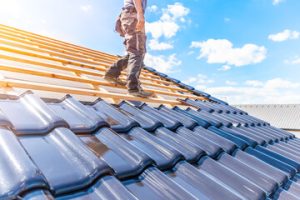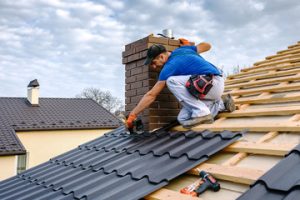Roofing installation is more than just placing materials on a structure. It is a blend of skill, precision, and planning that ensures durability. Homeowners often underestimate the value of proper installation. A poorly installed roof can lead to costly repairs.

Choosing the right materials is the first step in the process. Each type of material has its advantages depending on climate and structure. Lightweight materials reduce strain on the building framework. Heavier options may offer better longevity.
Preparation begins with a thorough inspection of the existing structure. Weak beams or water damage can compromise the new installation. Removing old roofing layers is essential for a smooth surface. Any debris left behind can affect adhesion.
Proper measurements are critical in achieving a flawless fit. Even small errors can lead to gaps or leaks. Measuring twice and cutting once is an essential mantra. Precision ensures the installation lasts longer.
Safety cannot be overlooked during roofing installation. Workers must use harnesses and protective gear at all times. Falls and injuries are common hazards in roofing work. Following safety protocols reduces risks dramatically.
Weather conditions play a crucial role in scheduling installation. Rain or extreme heat can hinder progress and damage materials. A well-timed installation maximizes efficiency and quality. Planning around weather forecasts is often necessary.
Underlayment acts as a secondary barrier against moisture and wind. Its installation is as critical as the outer roofing material. Incorrect placement can lead to leaks and mold growth. The underlayment layer enhances the roof’s longevity.
Flashing is essential around edges, chimneys, and vents. It prevents water from seeping into vulnerable areas. Improper flashing installation is a common cause of leaks. Precision placement ensures comprehensive protection.
Ventilation is often overlooked but vital in roofing systems. Proper airflow prevents moisture buildup and heat damage. Poor ventilation can shorten the lifespan of materials. It also helps maintain energy efficiency in the building.
Fastening methods differ depending on roofing materials. Nails, screws, or clips must be placed at specific intervals. Incorrect fastening can cause panels to loosen or lift. Using the right tools improves installation stability.
Insulation works hand in hand with roofing to improve energy efficiency. A well-insulated roof keeps interiors cooler in summer and warmer in winter. Neglecting insulation can increase energy costs. Modern installations often integrate insulation seamlessly.
The roof’s slope affects both water drainage and material choice. Steeper slopes require materials that resist sliding. Low-slope roofs need additional waterproofing layers. Proper slope assessment prevents future structural issues.
Cleaning and maintenance are part of a successful installation plan. Debris and moss buildup can deteriorate roofing over time. Periodic inspections catch minor issues before they escalate. A proactive approach extends the roof’s lifespan.
New technologies in roofing materials improve both durability and aesthetics. Solar-reflective coatings reduce heat absorption. Lightweight composite shingles mimic traditional designs. These innovations make roofing more sustainable.
Eco-friendly options are becoming more popular in modern installations. Recyclable materials minimize environmental impact. Rainwater harvesting systems can be integrated into the roof. These practices support sustainable building trends.
Skilled labor is a major determinant of installation quality. Experience and attention to detail affect the roof’s performance. Training in modern techniques ensures adherence to best practices. Homeowners should prioritize expertise over cost alone.
Time management impacts project efficiency. A well-planned schedule reduces downtime and material waste. Coordination between suppliers and installers is key. Delays can compromise both cost and quality.
Roofing installation is an investment in property value. A properly installed roof enhances curb appeal and structural integrity. Poor installation may require early replacement. Homeowners should view it as a long-term commitment.
Energy efficiency can be improved through reflective surfaces and insulation. Reducing heat absorption lowers cooling demands. This also reduces the carbon footprint of the building. Smart installation can contribute to sustainability goals.
Advanced sealing techniques prevent leaks at joints and seams. Liquid membranes and modern adhesives create a tight barrier. These methods extend the life of the roof. Proper sealing is often the difference between a good and a great installation.
Coordination with other building elements ensures a cohesive system. Gutters, downspouts, and attic ventilation must align with roofing design. Overlooking these connections can cause water damage. Integrated planning improves durability.
Emerging trends focus on modular roofing systems. Prefabricated panels simplify installation and reduce labor costs. They allow for faster project completion without compromising quality. Modular designs also make future repairs easier.
Inspection after installation is crucial. Professionals check for alignment, fastening, and material integrity. Catching errors early avoids costly repairs later. Post-installation inspection confirms a successful project.
Regular upgrades can extend a roof’s service life. Recoating or adding protective layers delays material degradation. These upgrades are more cost-effective than full replacement. They are especially valuable in harsh climates.
Noise reduction is an added benefit of modern installation techniques. Layers of underlayment and insulation dampen external sounds. This improves indoor comfort in noisy environments. Thoughtful installation considers both durability and comfort.
Integration of smart sensors is a new development in roofing. Sensors can detect leaks, temperature changes, or structural stress. This allows for proactive maintenance before problems worsen. Smart systems bring a new level of control to property management.
Investment in high-quality materials pays off in long-term savings. Durable roofs require fewer repairs and withstand extreme weather. Short-term cost-cutting often results in higher expenses. Prioritizing quality ensures peace of mind.
Aesthetic design matters as much as function. Modern roofing balances visual appeal with structural integrity. Color, texture, and pattern choices affect both style and energy performance. Homeowners increasingly seek installations that complement architectural design.
Contractors often offer warranties for both materials and workmanship. These guarantees protect against defects and poor installation. Understanding warranty terms is crucial for homeowners. It also reflects the installer’s confidence in their work.
Choosing the right roofing system depends on many factors. Climate, building type, and budget all influence decisions. Proper research and consultation help avoid costly mistakes. Tailoring the installation plan ensures the best outcome.
Maintenance schedules should be incorporated into property management. Seasonal checks prevent minor issues from escalating. Documentation of maintenance supports warranty claims. Consistency is key to prolonging roof life.
Innovation continues to shape the future of roofing. Lightweight, durable, and eco-friendly materials dominate new trends. Automation in installation improves precision and efficiency. The roofing industry is evolving to meet both environmental and practical demands.
Ultimately, roofing installation combines planning, skill, and foresight. Every step, from material selection to final inspection, affects longevity. Proper installation protects investment, comfort, and safety. Homeowners benefit from understanding its full scope.
